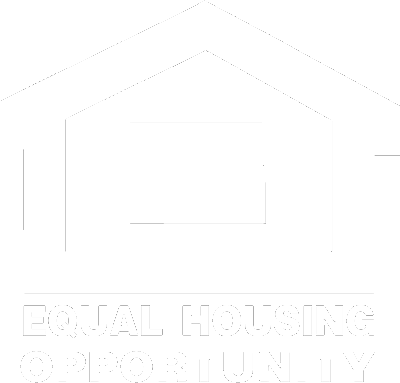Home prices continue to rise in most (70%) of the U.S., and are up notably year-to-year in the 7% of markets that saw double-digit gains.
WASHINGTON – Nearly seven out of 10 metro markets registered home price gains in the first quarter, according to the National Association of Realtors®’ (NAR) first-quarter report. In 7% of the 221 tracked metros, the price increase year-to-year was in the double digits, though 18% of metros saw that amount of an increase in the quarter before.
While a majority of metros saw a price increase in 1Q, it wasn’t enough to counteract the 40% that did not, and the national median single-family existing-home price dropped slightly (0.2%) to $371,200. In 4Q 2022, overall median prices increased 4.0%.
Among the major U.S. regions, the South – the area that includes Florida – saw the largest share of single-family existing-home sales (46%) in the first quarter, with year-over-year price appreciation of 1.4%. Prices climbed 2.9% in the Midwest but slipped 0.1% in the Northeast and 5.3% in the West.
“Generally speaking, home prices are lower in expensive markets and higher in affordable markets, implying greater mortgage rate sensitivity for high-priced homes,” says NAR Chief Economist Lawrence Yun. Cities in the West like San Francisco, San Jose and Reno saw home prices drop by at least 10% year-to-year – but prices rose by at least 10% in cities like Milwaukee, Dayton and Oklahoma City.
“Home prices are also lower in cities that previously experienced rapid price gains,” Yun says. “For example, home prices grew an astonishing 67% in three years in Boise City and Austin through 2022. The latest price reductions in these areas have improved housing affordability and led to some buyers returning given the sustained, rapid job creation in their respective markets.”
Year-over-year prices in the first quarter declined by 13.5% in Austin, 10.3% in Boise and 7.3% in Phoenix.
“Due to the intense housing inventory shortage, multiple offers are returning, especially on affordable homes,” Yun says. “Price declines could be short-lived.”
Inventory in the first quarter averaged 1,630,000 listings at any given time, a 40% reduction from the first quarter of 2019 – a year before the onset of the COVID-19 pandemic.
The top 10 metro areas with the largest year-over-year price increases all recorded gains of at least 11.7%, with three of those markets in Wisconsin and two in North Carolina:
- Kingsport-Bristol-Bristol, Tennessee-Virginia: 18.9%
- Oshkosh-Neenah, Wisconsin: 16.5%
- Warner Robins, Georgia: 16.2%
- Burlington, North Carolina: 14.7%
- Elmira, New York: 14.7%
- Oklahoma City, Oklahoma: 14.7%
- Milwaukee-Waukesha-West Allis, Wisconsin: 13.7%
- Appleton, Wisconsin: 12.4%
- Hickory-Lenoir-Morganton, North Carolina: 12.0%
- Santa Fe, New Mexico: 11.7%
Seven of the top 10 most expensive U.S. markets were in California, though the single Florida city on the list – Naples-Immokalee-Marco Island – was the only expensive market to also show a year-to-year price gain. The most expensive metros include:
- San Jose-Sunnyvale-Santa Clara, California: $1,618,400, down 13.7%
- Anaheim-Santa Ana-Irvine, California: $1,195,500, down 5.1%
- San Francisco-Oakland-Hayward, California: $1,192,600, down 14.5%
- Urban Honolulu, Hawaii: $1,029,000, down 8.8%
- San Diego-Carlsbad, California: $880,000, down 2.8%
- Salinas, California: $863,900, down 6.8%
- San Luis Obispo-Paso Robles, California: $850,200, down 3.8%
- Oxnard-Thousand Oaks-Ventura, California: $844,800, down 5.6%
- Boulder, Colorado: $836,900, down 2.6%
- Naples-Immokalee-Marco Island, Florida: $777,000, up 4.3%
Roughly three in 10 markets (31%; 68 of 221) experienced home price declines in the first quarter.
Housing affordability
First quarter housing affordability improved slightly quarter-to-quarter when mortgage rates eclipsed 7%.
The monthly mortgage payment on a typical existing single-family home with a 20% down payment was $1,859 – a 5.5% decrease from the fourth quarter of last year ($1,967) but a jump of 33.1% – or $462 – year-to-year. Families typically spent 24.5% of their income on mortgage payments, down from 26.2% the previous quarter but up from 19.5% one year ago.
First-time buyers found a small measure of relief if looking to purchase a typical home during the first quarter thanks to a decline in prices and mortgage rates. For a typical starter home valued at $315,500 with a 10% down payment, the monthly mortgage payment fell to $1,825, down 5.4% from the previous quarter ($1,930) but increased almost $450, or 32.5%, from one year earlier ($1,377).
First-time buyers typically spent 37% of their family income on mortgage payments, down from 39.5% the previous quarter. A mortgage is considered unaffordable if the monthly payment (principal and interest) amounts to more than 25% of the family’s income.
A family needed a qualifying income of at least $100,000 to afford a 10% down payment mortgage in 33% of markets, down from 38% in the prior quarter. Still, a family needed a qualifying income of less than $50,000 to afford a home in 10% of markets, up from 8.6% in the previous quarter.
© 2023 Florida Realtors®
©Florida Realtors®
Source link


